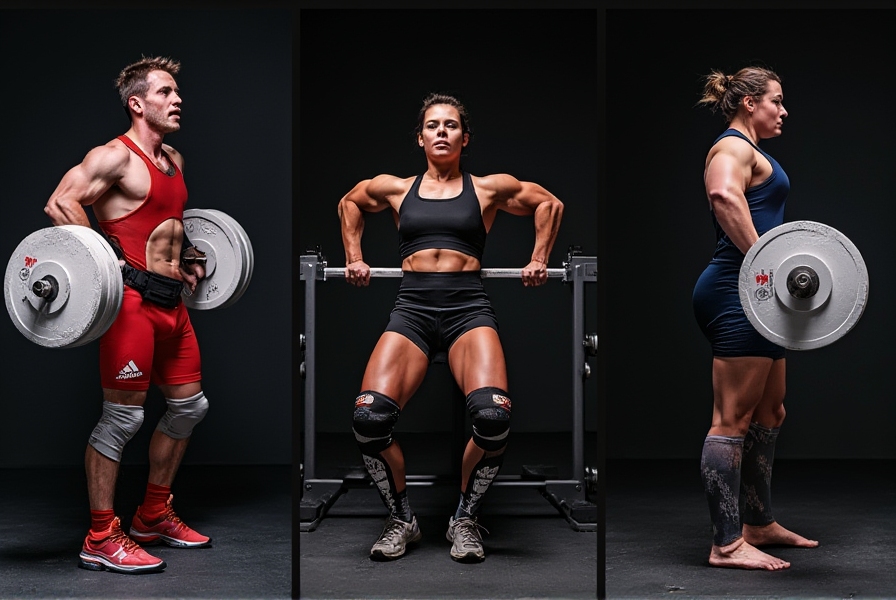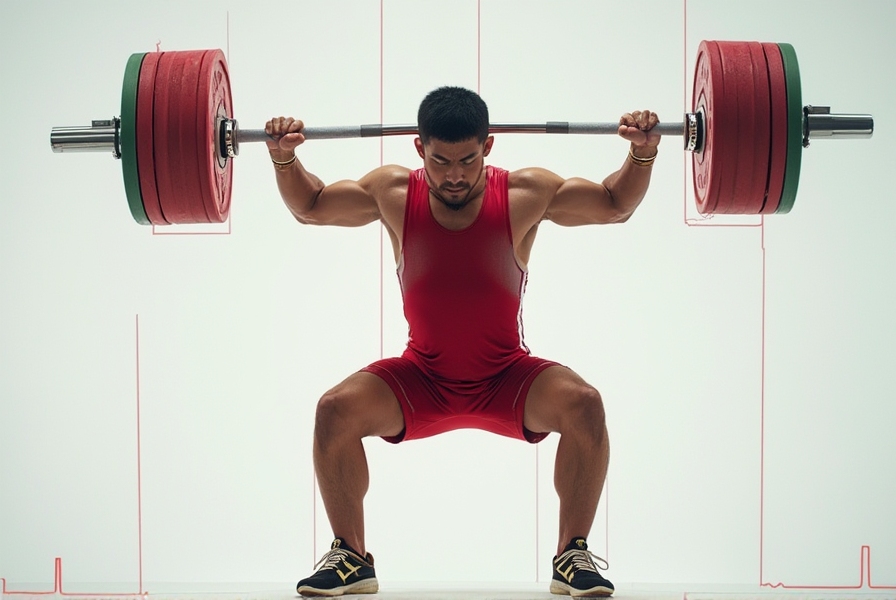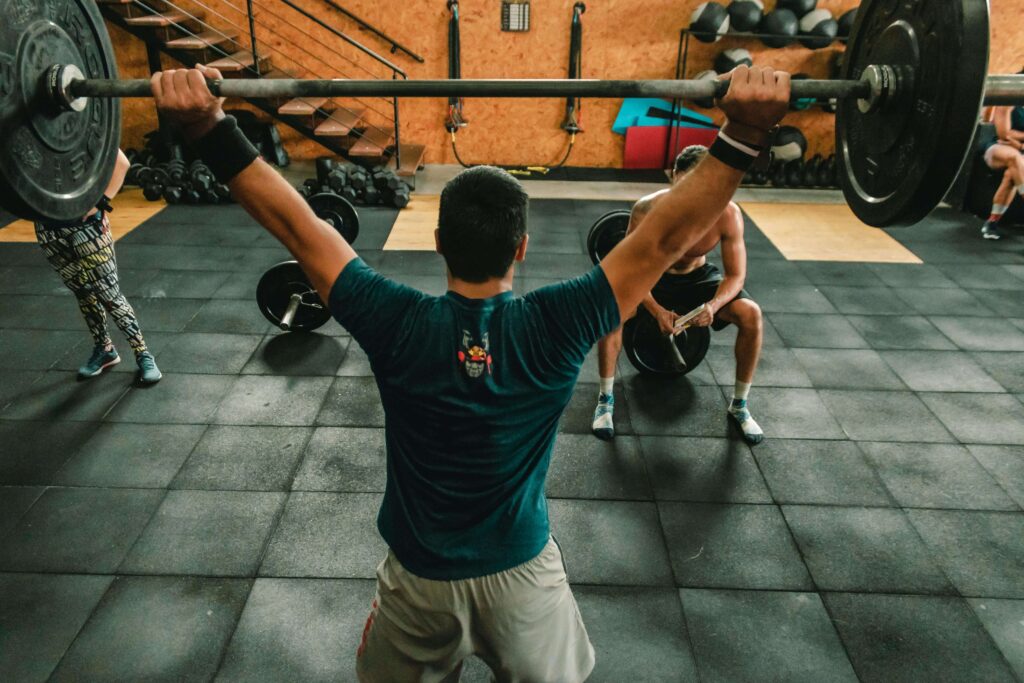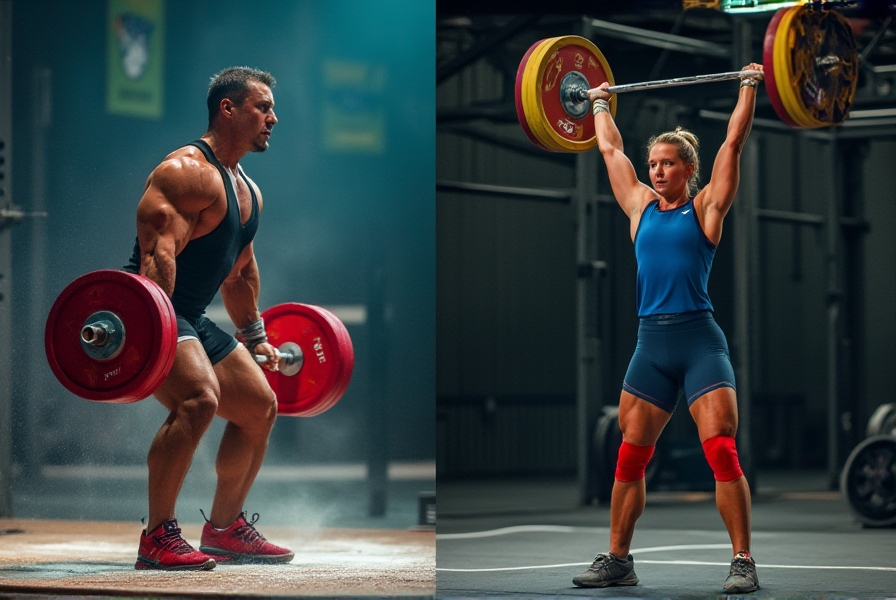Standing at my gym’s power rack last week, I watched two athletes training – one practicing their snatch technique with careful precision, while another was setting up for a heavy deadlift. Both were displaying incredible strength, but in completely different ways. This got me thinking about how often these two strength sports get mixed up, despite being as different as chalk and cheese.
If you’re scratching your head about which path to take in your strength journey, you’re not alone. While both powerlifting and weightlifting showcase human strength at its finest, they’re totally different beasts. Think of it like comparing a monster truck to a Formula 1 car – both are impressive vehicles, but they serve very different purposes.
The numbers don’t lie – powerlifting has seen a massive surge in popularity, with participation in competitions shooting up 38% in just five years. Weightlifting’s been riding its own wave too, especially since more people have been watching the Olympics and getting inspired by those explosive lifts.
But here’s the thing – picking between these two sports isn’t just about which one looks cooler on Instagram. It’s about matching the sport to your goals, your body, and what actually gets you fired up to train. Some folks love the technical challenge of getting a heavy barbell from the floor to overhead in one smooth motion, while others get their kicks from steadily building up to monster squats, bench presses, and deadlifts.
The Core Movements: Understanding Each Sport
Let me paint you a picture from last month’s local meet – in one corner, you’ve got powerlifters grinding through heavy squats that make the bar bend, while across town at the weightlifting competition, athletes are making barbells practically dance through the air. Same equipment, totally different sports.
Powerlifting’s Big Three
Let’s break down powerlifting first. It’s all about three lifts that most gym-goers already know and love:
- The Squat: Not your typical quarter-squat you might see at the local gym. We’re talking about controlling a heavy barbell on your back, hitting legal depth (hip crease below the knee), and standing back up. My first competition, I learned the hard way that what looks deep enough in training might not cut it under the judge’s eye.
- The Bench Press: More than just lying down and pushing. Every powerlifting bench press starts with a commands – “start,” “press,” and “rack.” You’ve gotta control the weight down, pause when the judge says so, and press it back up while keeping your butt on the bench.
- The Deadlift: Simple but brutal – pick up a heavy barbell from the floor and stand up with it. No hitching, no dropping, just raw strength from floor to lockout.

Olympic Weightlifting’s Technical Lifts
Now for weightlifting, where it’s all about two incredibly technical movements:
- The Snatch: Picture taking a barbell from the floor to locked out overhead in one explosive movement. Miss your timing by a split second? That bar’s going everywhere except where you want it. It’s like trying to teach a cat to swim – possible, but it takes time and patience.
- The Clean & Jerk: This is actually two movements in one. First, you’re pulling the bar from the floor to your shoulders (the clean), then driving it overhead (the jerk). Each part needs perfect timing, position, and power.
Quick Movement Comparison Table:
| Aspect | Powerlifting | Weightlifting |
| Speed | Controlled, grinding | Fast, explosive |
| Time Under Tension | 3-10 seconds per lift | 1-3 seconds per lift |
| Technical Elements | 3-5 key positions per lift | 8-12 key positions per lift |
| Failed Lifts Look Like | Slow grind to a stop | Missing the lift entirely |
Competition Format and Rules
Let me share something that blew my mind at my first powerlifting meet – I thought three attempts meant the whole thing would be over in an hour. Boy, was I wrong! Both powerlifting and weightlifting competitions have their own unique flow, and knowing what to expect can make or break your first competition experience.
Powerlifting Meet Structure
A powerlifting meet feels like three mini-competitions rolled into one big day:
- Weigh-ins happen 2 hours before (24 hours before for some feds)
- Lifts go in order: squats, bench press, deadlifts
- You get three attempts at each lift
- Best lift in each counts toward your total
- Equipment check happens during weigh-ins (better not forget your singlet!)
⚠️ Training Tip: Last meet, I watched a lifter bomb out on squats because they opened too heavy. Don’t be that person – picking smart attempt selections is half the battle!
Olympic Weightlifting Competition Format
Weightlifting meets have their own rhythm:
- All athletes complete their snatches first
- Then everyone moves on to clean & jerks
- Three attempts for each lift
- Best snatch + best clean & jerk = total
- Much faster pace between attempts than powerlifting
Competition Day Comparison:
| Element | Powerlifting | Weightlifting |
| Total Attempts | 9 (3 per lift) | 6 (3 per lift) |
| Competition Length | 6-8 hours | 2-3 hours |
| Rest Between Attempts | 30-45 mins | 10-15 mins |
| Weight Classes | 8 men’s, 8 women’s | 10 men’s, 10 women’s |

Equipment Requirements
Here’s what you’ll need to compete (and yes, they check everything):
Powerlifting:
- Singlet
- T-shirt (must meet fed specs)
- Long socks for deadlifts
- Belt (if you use one)
- Proper shoes
- Knee sleeves/wraps (depending on division)
Weightlifting:
- Singlet
- Weightlifting shoes (pretty much mandatory)
- Belt (optional)
- Wrist wraps (common)
- Knee sleeves (optional)
Training Approaches and Programming
When I first started coaching both sports, the difference in training styles hit me like a ton of plates. It’s like comparing a marathon training plan to sprinter workouts – same body parts moving, totally different methods.
Volume and Intensity Breakdown
Let’s talk about what a typical week looks like in each sport:
Powerlifting:
- 3-5 working sets per main lift
- Usually 70-90% of max for working sets
- Accessory work makes up 40-50% of training
- Most reps done at controlled speed
- Weekly volume varies by training block
Weightlifting:
- 8-12 sets per Olympic lift
- Lots of technique work at 60-75%
- Multiple sessions daily for advanced athletes
- Speed is key in every rep
- Higher daily frequency, lower absolute intensity
Sample Weekly Volume Comparison:
| Training Element | Powerlifting | Weightlifting |
| Weekly Sessions | 3-4 | 4-6 |
| Reps Per Main Lift | 15-25 | 30-50 |
| Technical Practice | 10-20% of session | 40-60% of session |
| Rest Between Sets | 3-5 minutes | 1-3 minutes |
Technical Practice Requirements
Each sport needs different amounts of skill work:
For Powerlifting:
- Form check with light weights
- Command practice for bench
- Setup consistency drills
- Pause work for weak points
For Weightlifting:
- Daily technique drills
- Position work
- Mobility exercises
- Speed under the bar practice
Recovery Considerations
This is where things get real personal. Your body takes a beating different ways in each sport:
Powerlifting Recovery Focus:
- CNS fatigue from max effort lifts
- Joint stress from heavy loads
- Lower back recovery crucial
- Weekly deloads usually needed
Weightlifting Recovery Focus:
- Quick muscle recovery between sessions
- Shoulder and wrist maintenance
- Lower back/knee care from catches
- Daily mobility work required
Which Sport Should You Choose?
Listen, I’ve seen people agonize over this choice like they’re picking a college major. But here’s the real talk – your body and goals will usually point you in the right direction. Let me break this down based on what I’ve seen work for different athletes.
Athletic Background Check
Your sports history can be a big hint:
- Ex-gymnasts and athletes from explosive sports often kill it in weightlifting
- Football players and strength athletes usually groove with powerlifting faster
- CrossFitters might lean either way, depending on their favorite movements
💪 Sport Selection: Got good mobility and quick movement patterns? Weightlifting might be your jam. More comfortable grinding out heavy lifts? Powerlifting could be calling your name.
Quick Self-Assessment Table:
| If You Have… | Consider… |
| Great mobility | Weightlifting |
| Strong grinding strength | Powerlifting |
| Limited training time | Powerlifting |
| Love technical challenges | Weightlifting |
| Previous back issues | Weightlifting |
| Want quick competition results | Powerlifting |

Equipment and Facility Needs
Before you choose, look at what you’ve got available:
Powerlifting Needs:
- Power rack
- Bench
- Standard barbell
- Lots of plates
- Basic gym membership usually works
Weightlifting Needs:
- Bumper plates
- Platform
- Specialized bars
- Dropping allowed
- Usually needs specialized gym
Time Investment Reality Check
Let’s talk about how much time you really need:
Powerlifting:
- 3-4 sessions/week minimum
- 1.5-2 hour sessions
- Can progress with 3 days/week
- More flexible scheduling
Weightlifting:
- 4-6 sessions/week optimal
- 1.5-2 hour sessions
- Daily practice ideal
- Morning/evening splits common
Making Your Final Decision
After spending years in both sports, watching hundreds of athletes start their strength journey, here’s what I know for sure: there’s no wrong choice – just the choice that works for you right now.
Both sports will:
- Make you stronger than you ever thought possible
- Teach you discipline and dedication
- Give you an awesome community
- Push your limits in different ways
If powerlifting calls to you, you’re looking at a sport that rewards consistency and grinding strength. You’ll learn to love the process of adding small amounts of weight to the bar, perfecting your technique under heavy loads, and feeling the rush of hitting a new PR in one of the big three lifts.
If weightlifting catches your eye, you’re in for a journey of technical mastery and explosive power. You’ll develop incredible body awareness, learn to move with speed and precision, and experience the unique satisfaction of successfully getting heavy weight from ground to overhead.
Remember This:
- Start with what excites you most
- Find a good coach early
- Join a gym that supports your choice
- Be patient with the learning curve
- Connect with others in your sport
Your First Steps:
- Visit both types of gyms
- Watch local competitions
- Try basic movements in both sports
- Talk to coaches and athletes
- Check your schedule against training requirements
Most importantly – don’t stress too much about making the “perfect” choice. Many athletes switch between sports or even compete in both. Your strength journey is just that – a journey. The path you pick today doesn’t have to be the one you stay on forever.
What matters most is starting somewhere and giving it your all. Whether you choose to grind out heavy powerlifting attempts or master the technical ballet of weightlifting, you’re joining a community of dedicated strength athletes who share your passion for getting stronger.
🎯 Motivation: Pick your path, commit to the process, and trust that with time and dedication, you’ll find your place in the strength sports world.
Ready to get started? Your barbell is waiting.



